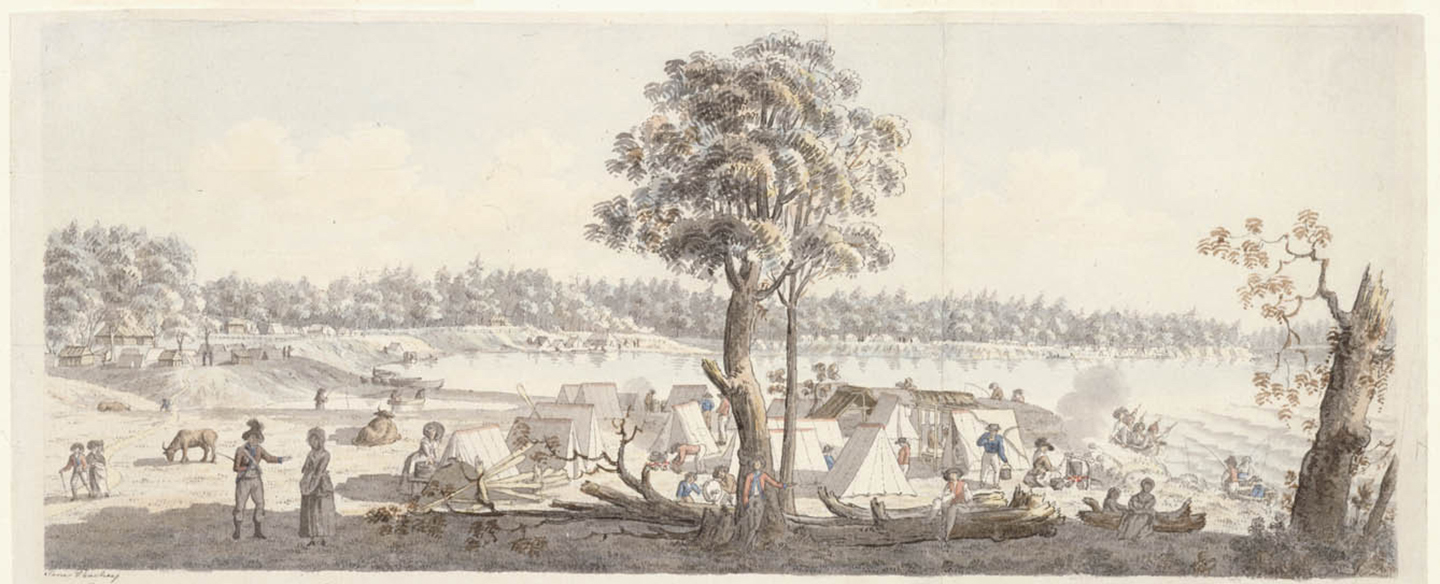
The following article was adapted from the Introduction to Mr. Coldham’s definitive account of the claims awarded to American colonists by the British crown following the Revolutionary War. For more information about events leading to the establishment of the American Claims Commission, as well as thousands of Loyalist sketches of the claimants themselves, see Mr. Coldham’s book, American Migrations, 1765-1799.
“Between 1765 and the end of 1783 it is estimated that more than 70,000 former inhabitants of mainland America had been obliged to emigrate to Canada, Britain, the West Indies or elsewhere; and between those dates many thousands more, on both sides of the conflict, had been constrained by the vicissitudes of war to leave their native towns and villages to seek refuge elsewhere in North America or in another part of the world. The best estimates suggest that 30,000 Loyalists found their way to Nova Scotia, 7,000 to Quebec, and a further 3,000 to the West Indies and Great Britain.
In July 1783 a British Act of Parliament introduced a formal scheme to rationalize the haphazard arrangements which already existed for the Treasury to rescue Loyalists from starvation and penury by the grant of a parsimonious “relief.” The Act set up a Commission to receive claims for compensation from former residents in the Thirteen Colonies [who had suffered losses going as far back as the Stamp Act crisis of 1765] and to examine the claimants and other witnesses to establish the truth of their claims and proof of their loyalty. The appointed Commissioners set up an office in Lincolns Inn Fields, where they were supposed to complete the examination of all claims received by 25 March 1784 . . . [however] it quickly became obvious that many deserving claimants trying to subdue the harsh terrain of Nova Scotia and New Brunswick, cultivate the wilds of Ontario and Quebec, or develop banana plantations in the West Indian islands would be penalized unless some extension was granted. In 1785 the Act was renewed and allowed claimants to submit their cases either in London or Nova Scotia up to 1 May 1786.
Two Commissioners, Col. Thomas Dundas and Jeremy Pemberton, were sent to Canada and heard evidence in Halifax, Shelburne, St. John, Quebec City, and Montreal. Exceptions to the time limits continued to be authorized in exceptional cases, and some new claimants were appearing as late as the 1790s. (Claimants from other areas such as East and West Florida, the West Indies, and Canada were excluded from consideration, though this did not prevent several applications. A separate Claims Commission for East Florida was established.)
The American Claims Commission from the beginning established for itself and its clients stringent rules to govern acceptable procedures, the nature of acceptable claims, and the categories and quality of proofs demanded. The weight of evidence surviving is still impressive, although, as the researches of Professor Bruce Antliff into the archives in Ontario, Washington, and London demonstrate, some materials have been lost.
Acting under the authority of the various statutes, the Commissioners created and accumulated a wide range of records. These have been arranged in two principal series designated as Audit Office 12 and Audit Office 13 at the Public Record Office. Series I (AO 12) includes the minute books and reports of the Commissioners, various tables and lists of claims, claimants, and decisions, as well as certain types of “evidence” received in support of claims and administrative records. Series II (AO 13) contains the memorials of claimants together with supporting documentation. This includes affidavits and depositions, originals, transcripts, and certified copies of legal documents such as property deeds and wills, correspondence, and a variety of notes compiled during the hearings or on receipt of the claims.
The biographical essays comprising American Migrations are derived from AO 12 and AO 13. In compiling each biographical entry, I have attempted to give the name of the claimant as shown in the original documents [with variants in square brackets] and his or her place of residence before the outbreak of the Revolution. Where an indication of a claimant’s pre-war residence or country of origin is absent from the synopsis, it may often be found by reference to the volumes of Evidence in AO 12. At the end of each entry is a note of all the PRO references to the claim which have been identified, beginning with AO 12 and AO 13 and occasionally with the addition of other references . . . The synopses in American Migration , 1765-1799 are mostly highly compressed versions of the original papers, and any serious researcher should, of course, have recourse to the documents for which references are provided throughout the book.”





